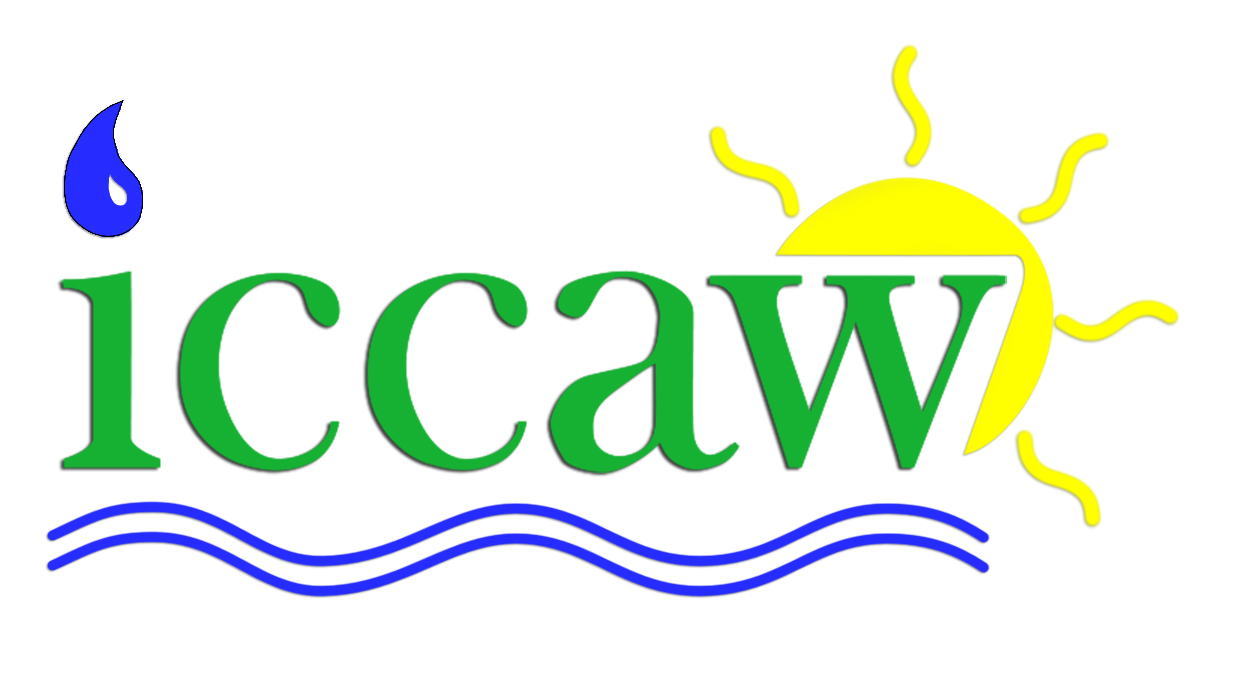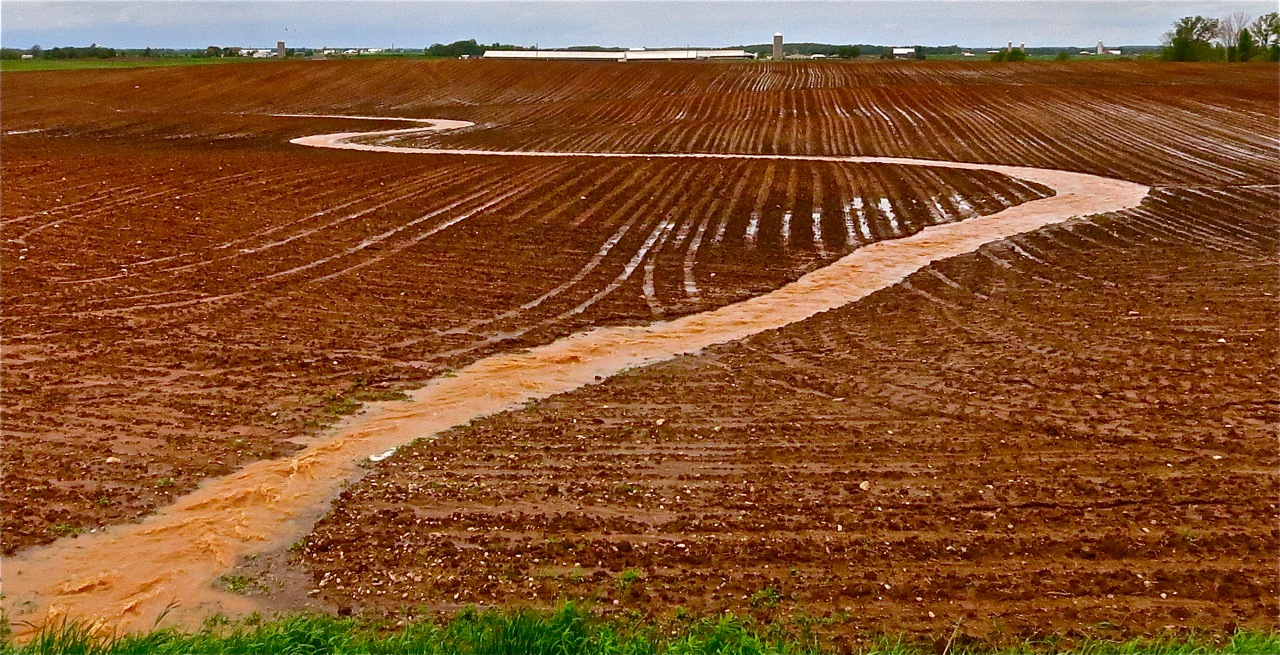Water Quality Studies and Reports
Illinois’ Failure to Regulate Concentrated Animal Feeding Operations in Accordance with the Federal Clean Water Act - This article was authored by attorney and co-founder of ICCAW, Danielle Diamond. While federal laws regulating CAFOs under the Clean Water Act have been weakened since this article was published, the Illinois EPA still has the responsibility to properly regulate the industry and to prevent pollution.
Ground Water Bacterial Investigation, Southern Utah University - In the fall of 1998, DEQ and the Southwest Public Health Department began receiving complaints from residents of the Milford Flats area that bacteria were present in private drinking water wells. Milford Flats is located south of the town of Milford in Beaver County. In response to these complaints, DEQ formed a Ground Water Steering Committee comprised of federal, state, and local agencies, and Milford Flat residents. The objective of the Ground Water Steering Committee was to determine the extent of contamination and other factors concerning ground water in the Milford Flats area.
http://www.thefreelibrary.com/Androgenic+and+estrogenic+activity+in+water+bodies+receiving+cattle…-a0115034525 - In summary, this data indicates that significant estrogenic and androgenic activity is released into water by feedlot operations. Our findings are compatible with the hypothesis that the animals in this feedlot may have been treated with an anabolic mixture of androgen and estrogen, such as testostetone propionate and estradiol benzoate. This supports the findings of Orlando et al. (2004) regarding masculinization of female fish captured at sites 2 and 3. These findings contribute to the increasing literature documenting the contamination of water bodies in the United States and Europe with numerous bioactive agents, including natural hormones, xenohormones, and pharmacologic agents (Allen et al. 1999; Kolpin et al. 2002; Vethaak et al. 2002), and point to the urgent need to take steps to curtail environmental degradation caused by the release of these chemicals into bodies of water.
Manure-borne Estrogens as Potential Environmental Contaminants: a Review - This paper discusses the environmental impacts of endocrine disrupting compounds in livestock wastes. There is particular concern about estrogenic hormones, such as estradiol, estrone and estriol. These steroidal hormones have been shown to have adverse effects on the reproductive biology of fish and other aquatic vertebrate species at low nanogram per liter concentrations in water. The authors call for more detailed research on numerous aspects of this issue with the goal of minimizing estrogen contamination of waterways.
Impacts of Waste From Concentrated Animal Feeding Operations on Water Quality - Based on the available data the authors of this paper conclude that “generally accepted livestock waste management practices do not adequately or effectively protect water resources from contamination with excessive nutrients, microbial pathogens, and pharmaceuticals present in the waste. They call for “rigorous ecosystem monitoring” in CAFO localities, increased knowledge of the pollutants affecting human and environmental health, as well as the promotion and enforcement of best practices to protect freshwater and marine ecosystems from CAFO contaminants. (NOTE: This paper was written by a work group of the Conference on Environmental Health Impacts of Concentrated Animal Feeding Operations: Anticipating Hazards-Searching for Solutions)
Determinants of the geographical distribution of endemic giardiasis in Ontario, Canada: a spatial modeling approach - This study utilized drinking water, socioeconomic, land-use, and Giardiasis surveillance data to investigate the factor determining the “geographic distribution of endemic giardiasis in southern Ontario. Researchers observed higher rates in rural areas and in areas using surface water. Areas using filtered water and those with higher income had lower rates. Intensity of manure application to farmland, chlorination of drinking water and cattle density were not significant determinants. Waterborne transmission is an important factor in giardiasis occurrence in southern Ontario.
Association between environmental risk factors and campylobacter infections in Sweden - The most common cause of acute bacterial gastroenteritis in Sweden is Campylobacter species. This study utilized Geographical Information Systems (GIS) surveillance data to investigate associations between geographical patterns of disease incidence and possible environmental risk factors. Results showed a positive association between ruminant density and water-pipe length per person. This data suggests that water contamination may be a significant factor in human campylobacteriosis in Sweden.
Water Science Glossary of Terms - This glossary of water-related terms was compiled by the U.S. Geological Survey.
EPA Needs More Information and a Clearly Defined Strategy to Protect Air and Water Quality from Pollutants of Concern - In this 85 page report the Government Accountability Office analyzed data collected by the USDA from 1982-2002. Because no federal agency collects consisten, reliable data on Concentrated Animal Feeding Operations, this reports used large farms as a proxy for CAFOs. The report addresses five main topics: 1) CAFO trends over the past 30 years, 2) the amount of waste generated by CAFOs, 3) key research on the environmental and health impacts of CAFOs, 4) the progress of the EPA in developing air emissions protocols for CAFOs, and 5) the impact of recent court decisions on regulation of CAFO water pollution by the EPA.
Environmental Contaminants Associated With A Swine Concentrated Animal Feeding Operation And Implications For McMurtrey Natioal Wildlife Refuge - Waste generated by concentrated animal feeding operations (CAFOs) may contain a variety of contaminants including nutrients, pathogens, trace elements, antibiotics, and hormones. In 2000, the U.S. Fish and Wildlife Service began to characterize CAFO contaminants in lagoons, canals, and created wetlands operated by Hastings Pork, a large swine CAFO adjacent to McMurtrey National Wildlife Refuge (McMurtrey) in Clay County, Nebraska. The created wetlands were designed to attract waterfowl; therefore, the primary purpose of this research was to evaluate whether migratory waterfowl were likely exposed to CAFO contaminants. A secondary research objective was to determine if created wetland water was suitable as a supplementary water source for McMurtrey. Wetlands created from swine waste water effluent had 5-50 fold greater concentrations of phosphorus, ammonia, and total nitrogen and 2-3 fold greater salinity compared to control sites. Cyanobacteria (Microcystis spp.) were abundant in the created wetlands and microcystin toxins were detected in concentrated water samples. Tetracycline, macrolide, and diterpene antibiotics were detected in lagoon and canal sediment and water samples; however, in the created wetlands only oxytetracycline was detected (once in sediment at 41 nanograms per gram)
Siting restrictions and proximity of Concentrated Animal Feeding Operations to surface water - Proximity and connections to surface waters may play significant roles in determining impacts of manure spills. As occurred in many U.S. states, Minnesota adopted in 2000 more stringent regulations on CAFOs including restrictions on siting new facilities near surface waters. The objectives of this study were to determine whether CAFO proximity to surface waters decreased following the siting restrictions and to evaluate implications of siting restrictions. Permit dates, locations, and distances to nearest surface water bodies for 111 west central Minnesota CAFOs were determined based on satellite imagery, historical records, and correspondence with regulatory officials. Average distance between surface waters and facilities permitted after 2000 was greater than for facilities permitted before 2000. The increase in average distance between CAFOs and public surface waters was significant for open water (1790 m, p = 0.03), but not for streams (280 m, p = 0.47). Decreased CAFO proximity to surface waters should benefit water quality, but after 2000 facilities continued to be permitted close to hydraulic connections not covered by the siting restriction. Comprehensive manure spill tracking and long term targeted water quality monitoring are needed to evaluate effectiveness of siting restrictions and other strategies for protecting surface waters from manure spills.
A Short Analysis Of: Manure Management for Water Quality: Costs to Animal Feeding Operations of Applying Manure Nutrients to Land - This report is a critique of the U.S. Department of Agriculture study on the costs of manure spreading under the new EPA requirements.
Concentrating on Clean Water: The Challenge of Concentrated Animal Feeding Operations [Executive Summary] [Full Report] - This report provides detailed information about the many harmful impacts of factory farms on water quality.
Cesspools of Shame: How Factory Farm Lagoons and Sprayfields Threaten Environmental and Public Health - NRDC exposes the hidden dangers of pollution from factory farms to the public. Even the U.S. Environmental Protection Agency has been kept in the dark about how many of these facilities work, because they weren’t required to—or have failed to—provide the agency with information about their operations. NRDC has long fought in the courtroom as well as in the halls of federal agencies and Congress to force the federal government to collect basic operating information about—and do more to address pollution from—these facilities.

